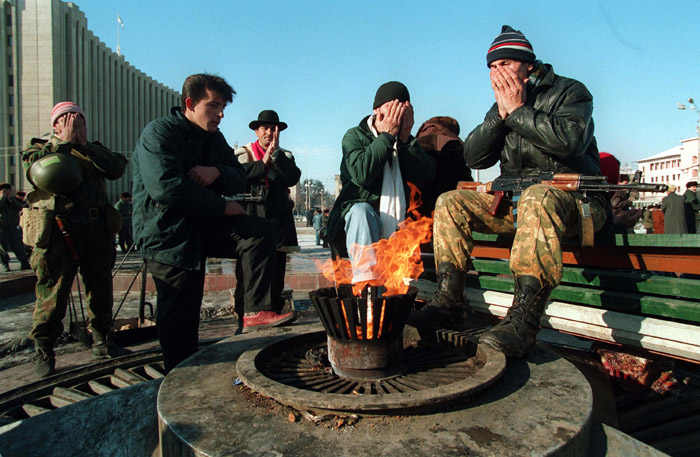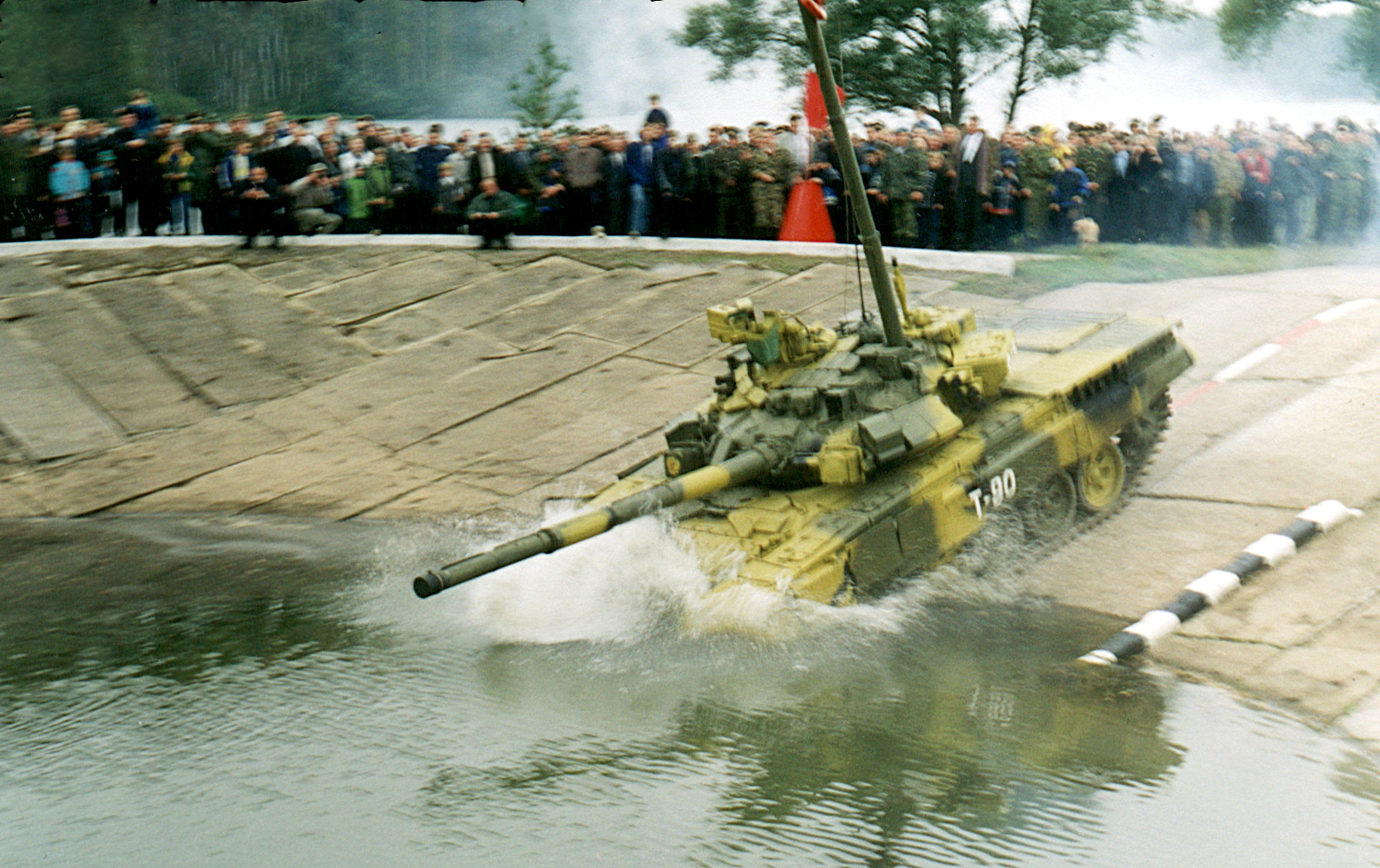|
IMR-2
The IMR-2 is a Soviet and Russian tracked military engineering vehicle built on T-72 main battle tank chassis. IMR stands for ''Inzhenernaya Mashina Razgrazhdeniya'' (russian: link=no, инженерная машина разграждения-2; ИМР-2), meaning "Clearing Engineering Vehicle". Development of the IMR-2 begun in 1970s and completed in 1980, while commercial production commenced in 1982. IMR-2 developed to replace aging IMR which built on the basis of T-54/55 tank. The IMR-2 combat engineering vehicle is in service with Russian Army and some foreign militaries. It took part in Soviet-Afghan War, First Chechen War, Second Chechen War, Russian invasion of Ukraine and was in addition used in relief operations after Chernobyl disaster. Design IMR-2 was derived from the T-72 tank. The turret of the T-72 was replaced with a new rotating multipurpose telescopic crane. The IMR-2 has a bulldozer blade fitted on the front of the hull, which has a V shape and a straight ... [...More Info...] [...Related Items...] OR: [Wikipedia] [Google] [Baidu] |
Combat Engineering Vehicle
A military engineering vehicle is a vehicle built for construction work or for the transportation of combat engineering, combat engineers on the battlefield. These vehicles may be modified civilian equipment (such as the Armored bulldozer, armoured bulldozers that many nations field) or purpose-built military vehicles (such as the AVRE). The first appearance of such vehicles coincided with the appearance of the first tanks, these vehicles were modified Mark I tank, Mark V tanks for bridging and mine clearance. Modern ''military engineering vehicles'' are expected to fulfill numerous roles, as such they undertake numerous forms, examples of roles include; bulldozers, crane (machine), cranes, graders, excavators, dump trucks, breaching vehicles, bridging vehicles, military ferries, amphibious crossing vehicles, and combat engineer section carriers. History World War One A Heavy RE tank was developed shortly after World War I by Major Giffard LeQuesne Martel RE. [...More Info...] [...Related Items...] OR: [Wikipedia] [Google] [Baidu] |
T-72
The T-72 is a family of Soviet/Russian main battle tanks that entered production in 1969. The T-72 was a development of the T-64, which was troubled by high costs and its reliance on immature developmental technology. About 25,000 T-72 tanks have been built, and refurbishment has enabled many to remain in service for decades. It has been widely exported and has seen service in 40 countries and in numerous conflicts. The T-90 introduced in 1992 is a development of the T-72B; production and development of various modernized T-72 models continues today. Development Development from the T-64 The T-72 was a product of a rivalry between design teams. Morozov KB was led by Alexander Morozov in Kharkiv. Uralvagon KB was led by Leonid Kartsev in Nizhny Tagil. To improve on the T-62, two designs based on the tank were tested in 1964: Nizhny Tagil's Object 167 (T-62B) and Kharkiv's Object 434. Ob. 434 was a technically ambitious prototype. Under the direction of Morozov in Kharki ... [...More Info...] [...Related Items...] OR: [Wikipedia] [Google] [Baidu] |
First Chechen War
The First Chechen War, also known as the First Chechen Campaign,, rmed conflict in the Chechen Republic and on bordering territories of the Russian FederationФедеральный закон № 5-ФЗ от 12 января 1995 (в редакции от 27 ноября 2002) "О ветеранах" or the First Russian-Chechen war, was a war of independence which the Chechen Republic of Ichkeria waged against the Russian Federation from December 1994 to August 1996. The first war was preceded by the Russian Intervention in Ichkeria, in which Russia tried to covertly overthrow the Ichkerian government. After the initial campaign of 1994–1995, culminating in the devastating Battle of Grozny, Russian federal forces attempted to seize control of the mountainous area of Chechnya, but they faced heavy resistance from Chechen guerrillas and raids on the flatlands. Despite Russia's overwhelming advantages in firepower, manpower, weaponry, artillery, combat vehicles, airstrikes ... [...More Info...] [...Related Items...] OR: [Wikipedia] [Google] [Baidu] |
Military Engineering Vehicles Of The Soviet Union
A military, also known collectively as armed forces, is a heavily armed, highly organized force primarily intended for warfare. It is typically authorized and maintained by a sovereign state, with its members identifiable by their distinct military uniform. It may consist of one or more military branches such as an army, navy, air force, space force, marines, or coast guard. The main task of the military is usually defined as defence of the state and its interests against external armed threats. In broad usage, the terms ''armed forces'' and ''military'' are often treated as synonymous, although in technical usage a distinction is sometimes made in which a country's armed forces may include both its military and other paramilitary forces. There are various forms of irregular military forces, not belonging to a recognized state; though they share many attributes with regular military forces, they are less often referred to as simply ''military''. A nation's military may f ... [...More Info...] [...Related Items...] OR: [Wikipedia] [Google] [Baidu] |
T-90
The T-90 is a third-generation Russian main battle tank. It uses a 125mm 2A46 smoothbore main gun, the 1A45T fire-control system, an upgraded engine, and gunner's thermal sight. Standard protective measures include a blend of steel and composite armour, smoke grenade dischargers, Kontakt-5 explosive reactive armour (ERA) and the Shtora infrared anti-tank guided missile (ATGM) jamming system. The T-90 was designed and built by Uralvagonzavod, in Nizhny Tagil, Russia. It entered service with the Russian Army in 1992. Development The T-90 has its origins in a Soviet-era program aimed at developing a single replacement for the T-64, T-72 and T-80 series of main battle tanks. The T-72 platform was selected as the basis for the new generation of tank owing to its cost-effectiveness, simplicity and automotive qualities. The Kartsev-Venediktov Design Bureau from Nizhny Tagil was responsible for the design work and prepared two parallel proposals—the ''Object 188'', whic ... [...More Info...] [...Related Items...] OR: [Wikipedia] [Google] [Baidu] |
NSV Machine Gun
The NSV (Russian НСВ Никитина-Соколова-Волкова), also known as the «Utyos» (Project: ''Lonely Cliff''), is a 12.7mm caliber heavy machine gun of Soviet origin, named after the designers, G. I. Nikitin (Г. И. Никитин), Y. S. Sokolov (Ю. М. Соколов) and V. I. Volkov (В. И. Волков). It was designed to replace the DShK machine gun and was adopted by the Soviet Army in 1971. It is no longer being produced in Russia; the manufacturing license for the NSV ended up in Kazakhstan after the break-up of the Soviet Union. The NSV has been manufactured in Bulgaria, India, Poland and Yugoslavia under license. The NSV weighs , has a rate of fire of 700–800 rounds per minute, and an effective range from to against airborne and ground targets, respectively. A loaded ammunition belt with 50 rounds weighs . The NSVT version is used on the T-72, T-64 and T-80 tanks. The new Kord machine gun has replaced worn-out NSVs in some countries. ... [...More Info...] [...Related Items...] OR: [Wikipedia] [Google] [Baidu] |
IMR Combat Engineering Vehicle In Odesa
IMR may refer to: Organisations * Imperial Military Railways, of British forces in South Africa 1898-1901 * Isle of Man Railway * Industrija Motora Rakovica * International Mineral Resources * Institute for Materials Research, or Kinken in Japan * Institute of Marine Research, in Norway * Institute of Modern Russia * International Marketing Review Science, technology and engineering * Infant mortality rate * Interrupt mask register, in computing is used to disable interrupts * Interlocking machine room of the London Underground signalling system * Inverse Mills ratio, in statistics and graphs * Improved Military Rifle, a type of gunpowder * IMR vessel (Inspection, Maintenance and Repair) Other uses * Ideomotor response, in hypnosis and psychological research * Individual ministerial responsibility, a political convention in Parliamentary systems of Government * Institutional mode of representation, in film theory * In Medias Res (band), Vancouver, Canada * International Mig ... [...More Info...] [...Related Items...] OR: [Wikipedia] [Google] [Baidu] |
Torsion Bar Suspension
A torsion bar suspension, also known as a torsion spring suspension, is any vehicle suspension that uses a torsion bar as its main weight-bearing spring. One end of a long metal bar is attached firmly to the vehicle chassis; the opposite end terminates in a lever, the torsion key, mounted perpendicular to the bar, that is attached to a suspension arm, a spindle, or the axle. Vertical motion of the wheel causes the bar to twist around its axis and is resisted by the bar's torsion resistance. The effective spring rate of the bar is determined by its length, cross section, shape, material, and manufacturing process. Usage Torsion bar suspensions are used on combat vehicles and tanks like the T-72, Leopard 1, Leopard 2, M26 Pershing, M18 Hellcat, M48 Patton, M60 Patton and the M1 Abrams (many tanks from World War II used this suspension), and on modern trucks and SUVs from Ford, Chrysler, GM, Mitsubishi, Mazda, Nissan, Isuzu, LuAZ, and Toyota. Class 8 truck manufacturer ... [...More Info...] [...Related Items...] OR: [Wikipedia] [Google] [Baidu] |
Chernobyl Disaster
The Chernobyl disaster was a nuclear accident that occurred on 26 April 1986 at the No. 4 nuclear reactor, reactor in the Chernobyl Nuclear Power Plant, near the city of Pripyat in the north of the Ukrainian Soviet Socialist Republic, Ukrainian SSR in the Soviet Union. It is one of only two nuclear energy accidents rated at seven—the maximum severity—on the International Nuclear Event Scale, the other being the 2011 Fukushima nuclear disaster in Japan. The initial emergency response, together with later decontamination of the environment, involved more than Chernobyl liquidators, 500,000 personnel and cost an estimated 18 billion Soviet rouble, roubles—roughly US$68 billion in 2019, adjusted for inflation. The accident occurred during a safety test meant to measure the ability of the steam turbine to power the emergency feedwater pumps of an RBMK, RBMK-type nuclear reactor in the event of a simultaneous loss of external power and major coolant leak. During a pla ... [...More Info...] [...Related Items...] OR: [Wikipedia] [Google] [Baidu] |
2022 Russian Invasion Of Ukraine
On 24 February 2022, in a major escalation of the Russo-Ukrainian War, which began in 2014. The invasion has resulted in tens of thousands of deaths on both sides. It has caused Europe's largest refugee crisis since World War II. An estimated 8 million Ukrainians were displaced within their country by late May and 7.8 million fled the country by 8 November 2022, while Russia, within five weeks of the invasion, experienced its greatest emigration since the 1917 October Revolution. Following the 2014 Ukrainian Revolution, Russia annexed Crimea, and Russian-backed paramilitaries seized part of the Donbas region of south-eastern Ukraine, which consists of Luhansk and Donetsk oblasts, sparking a regional war. In March 2021, Russia began a large military build-up along its border with Ukraine, eventually amassing up to 190,000 troops and their equipment. Despite the build-up, denials of plans to invade or attack Ukraine were issued by various Russia ... [...More Info...] [...Related Items...] OR: [Wikipedia] [Google] [Baidu] |


.jpg)



